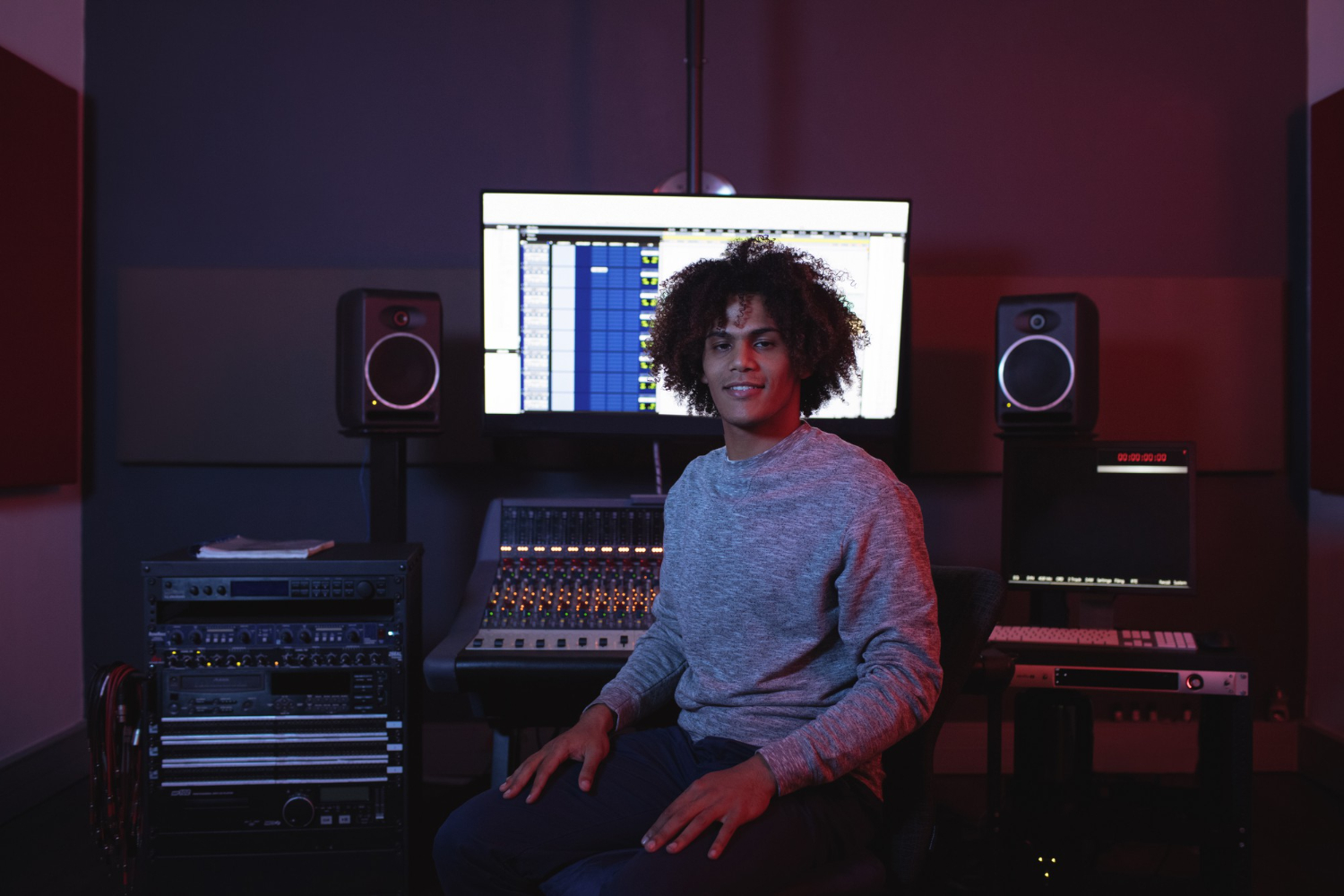Best Free Synth VST Plug-Ins for 2025
This detailed guide compares the ten most celebrated free synth VSTs, so you can find the best free VST plugins for your style and setup that deliver a user interface built for making music.
Free synth VST plugins and audio tools have never been more accessible or capable. Modern synthesisers and sample-based instruments now offer features once found only in high-end studios, giving every producer the chance to work at a professional standard.
At TYX recording studios in London, these tools are part of the daily creative process, tested and refined in real projects. That experience informs our recommendations here. In this article, we’ll go over our picks for the best free synth plugins.
What is a synth VST plugin?
A synth VST (Virtual Studio Technology) plugin is a type of audio plugin, specifically a virtual instrument, that creates electronic and sample-based sounds within your DAW.
Most are completely free to download and use, providing a free alternative to expensive hardware. Some act as standalone apps, but most are designed to run inside a VST host, letting you take advantage of multi-timbrality, layering, external sample libraries, and creative routing.
The VST format has become a music-industry standard due to its cross-platform compatibility across any operating system (including Apple Silicon), intuitive user interface, and flexible feature set.
Virtual synths now rival real instruments for expression and are packed with modulation, flexible visual representation, and options to expand with sample libraries or new sound sources.
These plugins have made making music more accessible, giving producers plenty of free options for their own great sounding results.
A brief history of virtual instruments
Steinberg developed Virtual Studio Technology (VST) in 1996, revolutionising the concept of VST stand-alone applications and audio plugins for music production.
Using a VST host, any producer could load virtual instruments with a modern user interface. Early plugins provided a simple visual representation of sound, but over time, the best free VST plugins incorporated advanced features, left and right channels panning, big sample libraries, and intuitive GUIs.
Companies like Native Instruments, Full Bucket Music, and Newfangled Audio brought innovation with new features, offering a free alternative to traditional hardware.
Full Bucket Music focused on emulating classic analogue hardware in VST format, completely free and with “sounds great” reviews.
Sample libraries, drum sounds, and even plugin sampler solutions like Decent Sampler are now standard free options. Komplete Start also offers many free instruments, sample libraries, and many presets in one VST host package.
Top 10 free synth VST plugins for 2025
Here's the list of the most popular and acclaimed free synth VST plugins, representing the best free VST plugins of the modern era and a wide array of audio plugins, user interface styles, sample libraries, and new features.
Vital by Matt Tytel
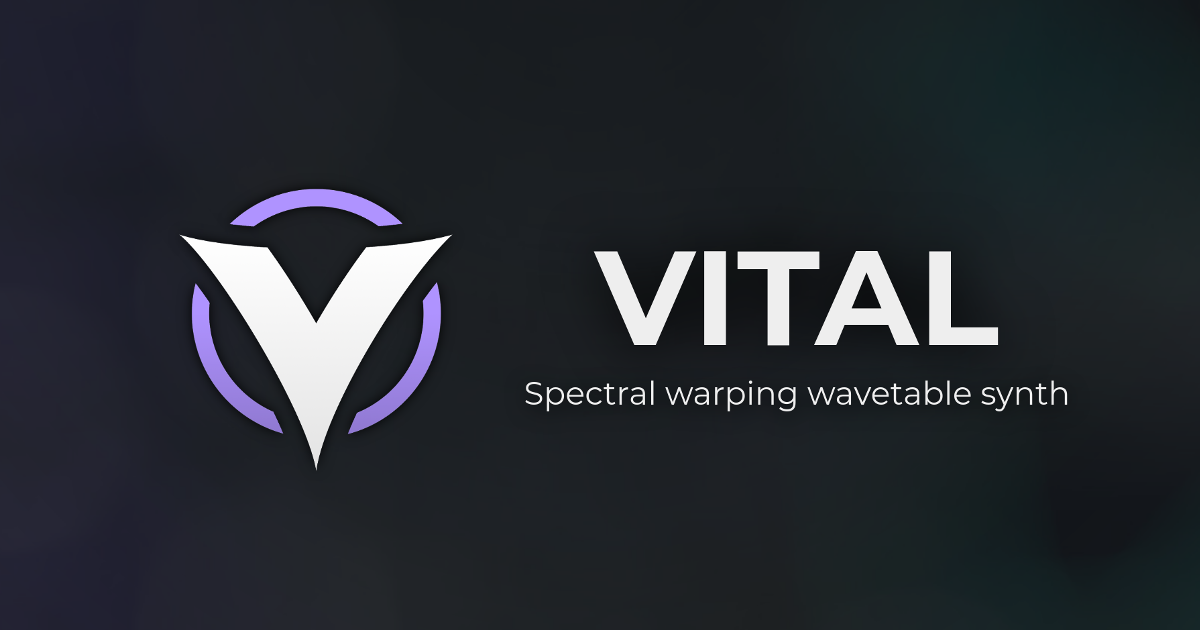
Independent developer Matt Tytel's Vital debuted in November 2020.
Known for obsessing over UI and sound engine design, Tytel previously created the popular Helm synth. With Vital, he aimed to bring advanced wavetable synthesis to everyone, inspired by the workflow of modern paid synths but determined to keep the core version free and open to all.
Its release was a landmark moment in the freeware synth community, praised for empowering music makers with a professional tool at zero cost.
- Notable features:
- Modern wavetable synthesis that has an unmatched visual representation for every parameter.
- Three oscillators (including sub oscillator), two multi-mode filters, and creative modulation options.
- Smooth stereo width, dynamic stereo image, and versatile routing of the left and right channels.
- Massive free soundbanks, standout presets and frequent updates with new plugins.
- Notable producers:
- Nick Mira (multi-platinum producer for Juice WRLD, Internet Money) has used Vital in his production streams and workflow.
- Mr. Bill (electronic/IDM artist) uses Vital extensively, has created his own preset packs, and demos it in livestreams.
- Chime (EDM/Disciple Records) has showcased Vital in production shorts, using it for advanced bass design.
- Slushii (EDM producer) has Vital visible in plugin lists during production sessions.
- Other genres: Artists across electronic, pop, hip hop, dubstep, and rock have adopted Vital’s unique sound.
- Pricing:
- Free version: Vital Basic: Completely free (fully featured, just fewer presets/wavetables).
- Paid version:
- Vital Plus: $25 (more presets/wavetables)
- Vital Pro: $80 (full content, exclusive perks)
- Subscription: $5/month (Pro tier benefits + store credit/new packs)
- You can do professional work with the free version; paid tiers expand content/features.
Surge XT
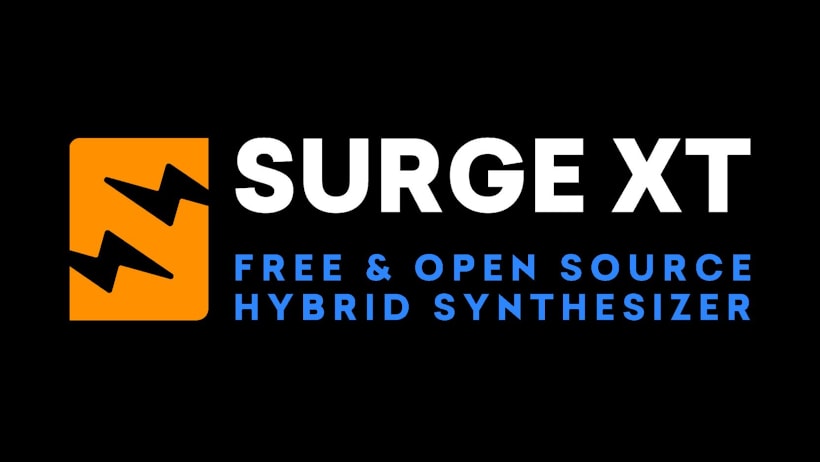
Surge was originally launched as a commercial synth called Surge in 2005 by Claes Johanson, then a developer at Vember Audio in Sweden.
In a rare move, the original source code was open-sourced in 2018, allowing a team of global volunteer developers (the Surge Synth Team) to revive and rapidly expand the platform.
The “XT” branding debuted in 2022, marking a new generation of features, GUIs, and cross-platform compatibility, making it the flagship open-source synth project in the music tech world.
It’s frequently paired with drum sounds, layered with drum loops or used as a sound source for Newfangled Audio textures.
Its open-source nature means new plugins and features arrive regularly.
- Notable features:
- Hybrid engine in VST format with 12 synthesis types: FM, wavetable, subtractive, digital suburban and more.
- Over 2,000 factory presets and user banks, with many presets always on offer.
- Fully resizable workflow and smooth MIDI learn features.
- Available as an audio plugin or standalone app for flexible setup.
- Notable producers:
- Used by Noisia, confirmed in studio walkthroughs.
- Pricing:
- Completely free and open source.
- Community-supported, with no paid tier.
- Available for Windows, macOS (including Apple Silicon), and Linux.
Tyrell N6 by u-he
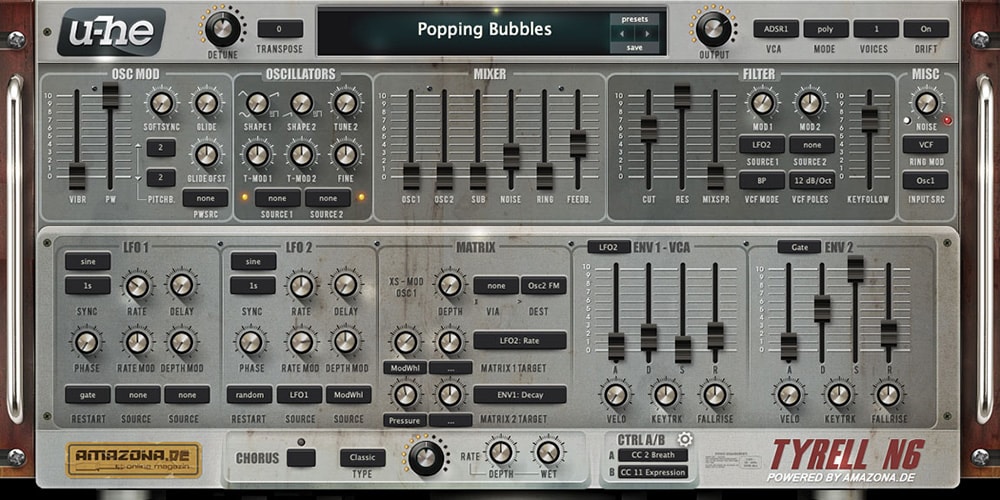
Tyrell N6 was brought to life in 2011 as a collaboration between German software house u-he, led by Urs Heckmann, and the online magazine Amazona.de.
Originally designed to demonstrate how a virtual analog synth could combine classic inspiration (especially from Roland’s Juno range) with fresh, freely available software, Tyrell N6 became one of the most respected entry-level free synths on the market, continuously updated to stay current with both Mac and PC users.
- Notable features:
- Analogue-style subtractive synthesis reminiscent of classic real instruments.
- Lush stereo width and diverse sound palette covering everything from bass to sweeping pads.
- Easy workflow suitable for both beginners and advanced producers.
- Notable producers:
- SAVI MINDS (indie/electronic artist) released a track titled “Tyrell-N6” and credited the synth in their production.
- Users inspired by artists like Ben Böhmer, Lane 8, and Christian Löffler mention Tyrell as their go-to free Juno-alike.
- Pricing:
- Always been completely free.
- Updated in 2025 and still offered at no cost from u-he's website.
Dexed
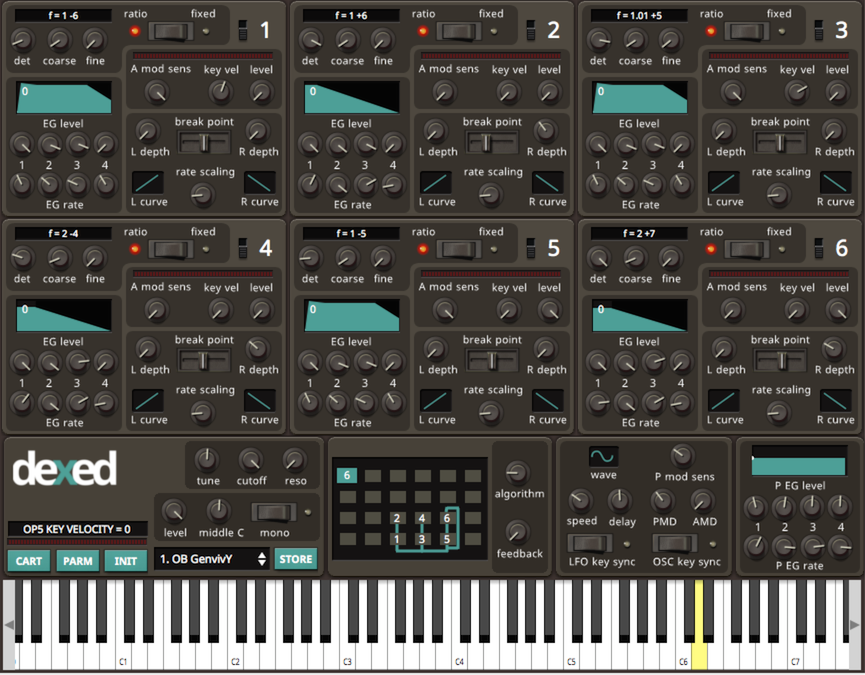
Dexed first appeared in 2014, developed by French coder Pascal Gauthier. It was conceived as an open-source recreation of the Yamaha DX7, leveraging the music-dsp community’s work on FM synthesis emulation.
Gauthier released it under the GPLv2 license, which empowered other coders to contribute and refine the synth, helping cement Dexed as the de facto free FM plugin for anyone craving classic digital tones in any DAW.
It has since been go-to free plugin for those seeking percussive drum sounds, iconic 80s bells, and realistic sound source manipulation beyond sample-based instruments.
Support for Kontakt Player is sometimes added through conversion.
- Notable features:
- Full emulation of Yamaha DX7, the pinnacle of FM synthesis and vintage digital suburban sound.
- Compatible with original hardware patches with many presets downloadable from fan forums.
- Exceptionally light on CPU and VST host resources.
- Notable producers:
- Four Tet (celebrated electronica artist) credits Dexed as a main soft synth on the album "New Energy”, alongside other top-tier plugins.
- Barely Alive (synthwave duo) have demonstrated Dexed for digital/analog synth tutorials.
- Temporex (alt-pop musician) describes Dexed as a “secret weapon” used across multiple albums.
- Pricing:
- 100% free/donationware.
- No paid tier, designed to be accessible for everyone.
Helm
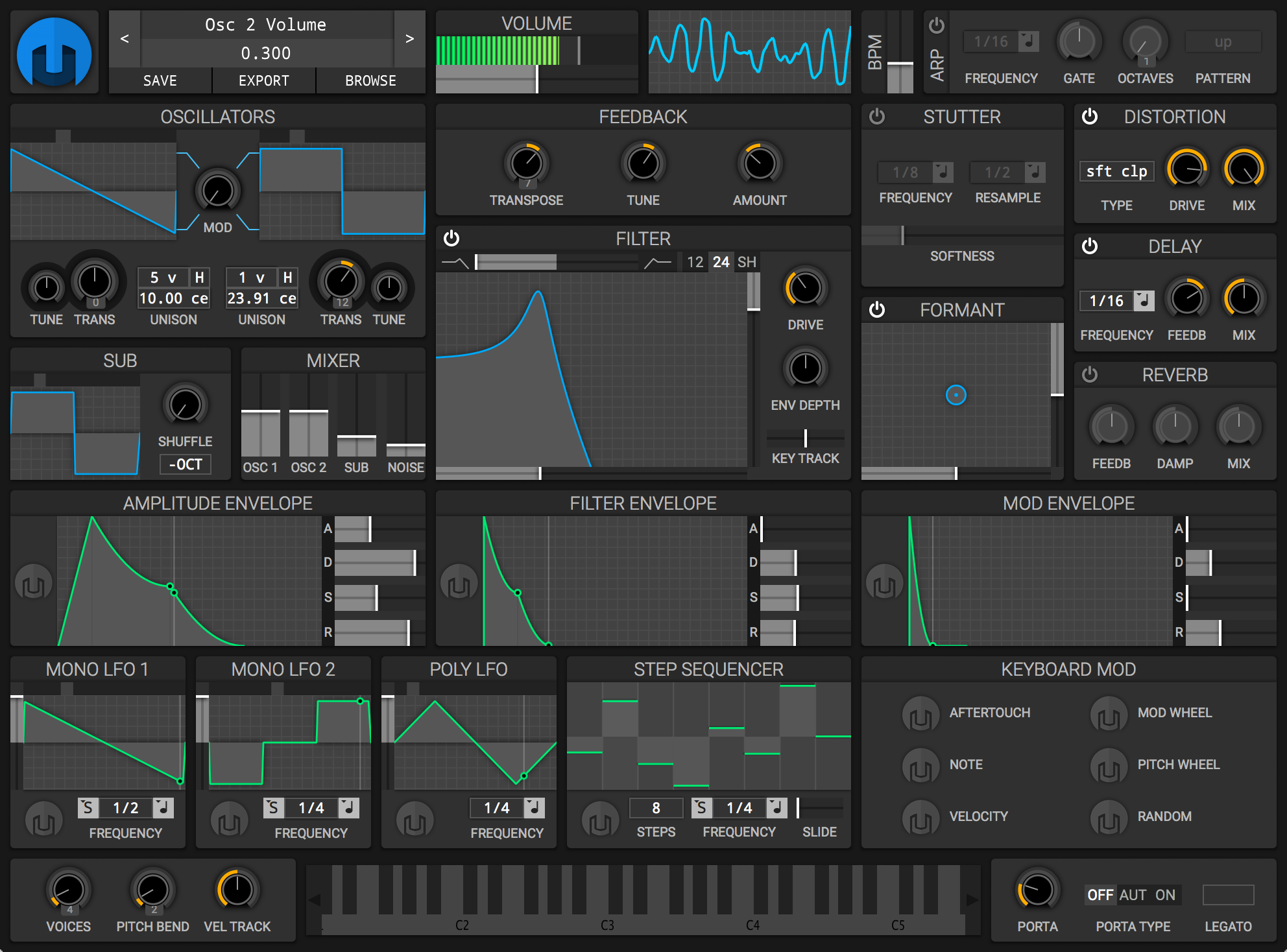
Released in late 2015, Helm was also developed by Matt Tytel. As Tytel’s first software synth, it gained traction in open-source and education circles for its cross-platform nature and approachable interface.
Tytel’s goal was to demystify synthesis for beginners while still providing enough depth for professionals, and Helm’s enduring popularity ensured his status as a developer to watch in the synth world.
Helm delivers real instrument tones and futuristic soundscapes, harnessing the power of a modern synth interface. Its audio plugin version is often praised for its reliability and creative possibilities.
- Notable features:
- Open-source synth with classic “analogue with a twist” architecture.
- Powerful modulation matrix, step sequencer, and stutter for dynamic drum loops.
- Cross-platform functionality, including standalone app version and vst format.
- Notable producers:
- Namechecked by Ben Prunty for soundtracks.
- Pricing:
- Completely free.
- Open source; available for all major platforms, no price tag
Odin 2
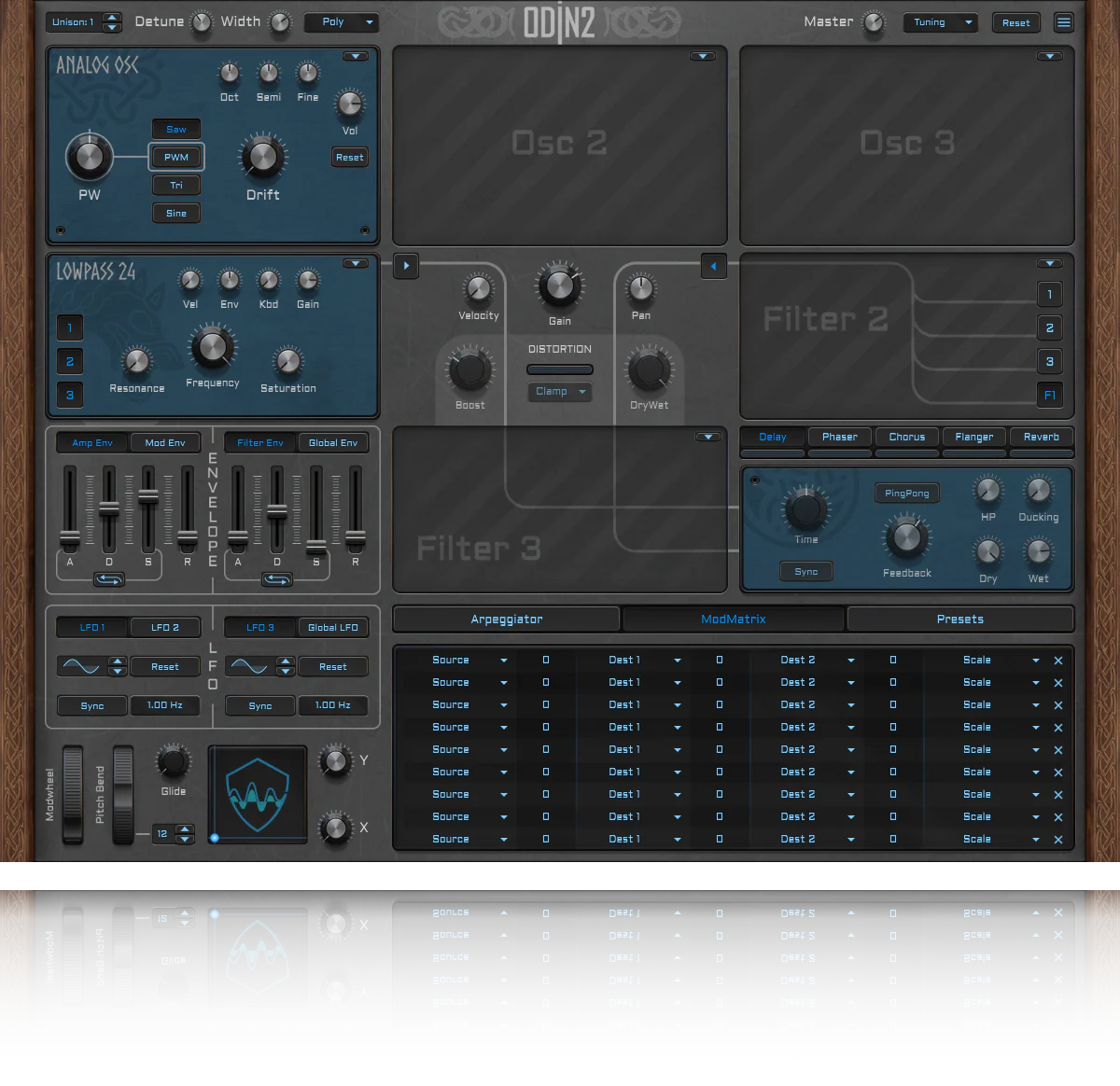
Odin 2 was introduced by Christian Hentschell, known online as TheWaveWarden, a German developer, in 2019.
With roots in the DIY and modular scene, Hentschel designed Odin 2 to bring modular flexibility to a wider audience, completely open-source.
The synth quickly gained a reputation for deep synthesis, modular patching, and rapid-fire updates, cementing TheWaveWarden’s name among boutique plugin developers.
Odin 2 excels not only as a VST instrument but also as a decent sampler of classic hardware textures.
- Notable features:
- Modular design that supports FM, wavetable, and analogue sound engines.
- Drag-and-drop patching and full stereo width control.
- Open-source, continually updated with new plugins and improved visual representation.
- Notable producers:
- Routinely highlighted on modular and sound design subreddits.
- Pricing:
- Free and open source.
- No paid versions or upgrades; donations welcome, but not required.
OB-Xd
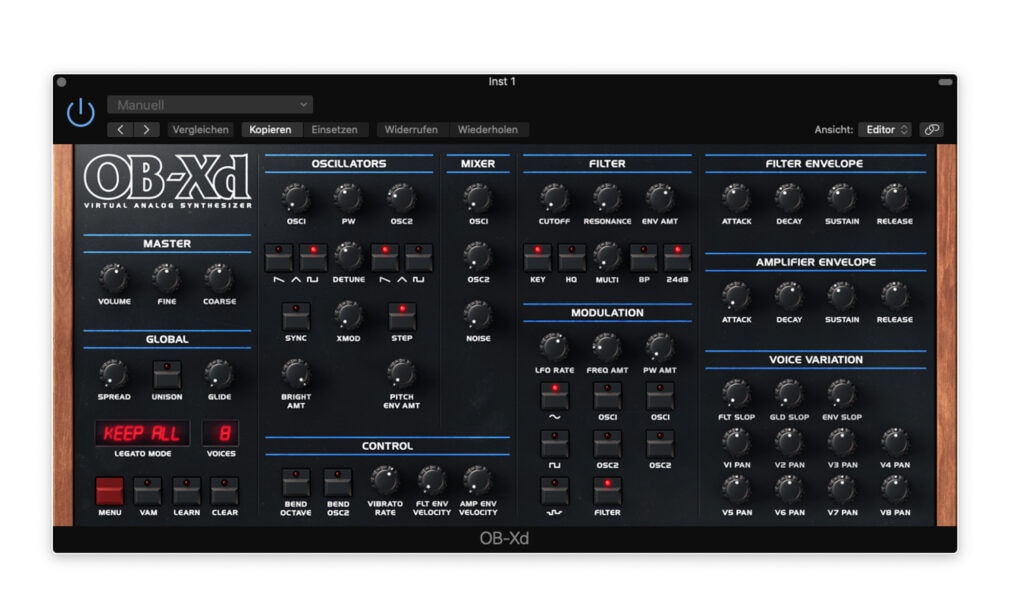
OB-Xd was first created in 2012 by 2Dat and released to the KVR Audio community as a freeware alternative to the coveted (and expensive) Oberheim OB-X hardware synths of the early 1980s.
Since 2019, OB-Xd’s “official” support and further development have been championed by discoDSP (George Reales and team), who updated it with modern plugin formats and a new interface, all while keeping the freeware ethos alive with a community-supported version.
Great for vintage leads, lush pads and contemporary drum sounds. Works seamlessly in all VST host environments; just add a free limiter plugin like Rough Rider for polished results.
- Notable features:
- Meticulous emulation of the Oberheim OB-X, famous for its unique stereo image and rich sound source layering.
- Built-in retro effects and authentic left and right channels panning.
- Simple plugins interface with a vivid visual representation of all controls.
- Notable producers:
- Espen Kraft (noted retro hardware YouTuber and synthpop producer) has repeatedly used and demoed OB-Xd on his channel, praising its vintage authenticity.
- Numerous classic synth enthusiasts on forums like Reddit and KVR have incorporated it in their tracks, especially for vintage-inspired electronic music.
- Pricing:
- Paid and free options:
- Free versions are still available from some platforms/community developers.
- Latest “official” version from discoDSP: $99.00 (updated July 2025)
- iOS/AUv3 edition: $19.99
- Upgrades for previous paid users are free.
- Paid and free options:
TAL-NoiseMaker
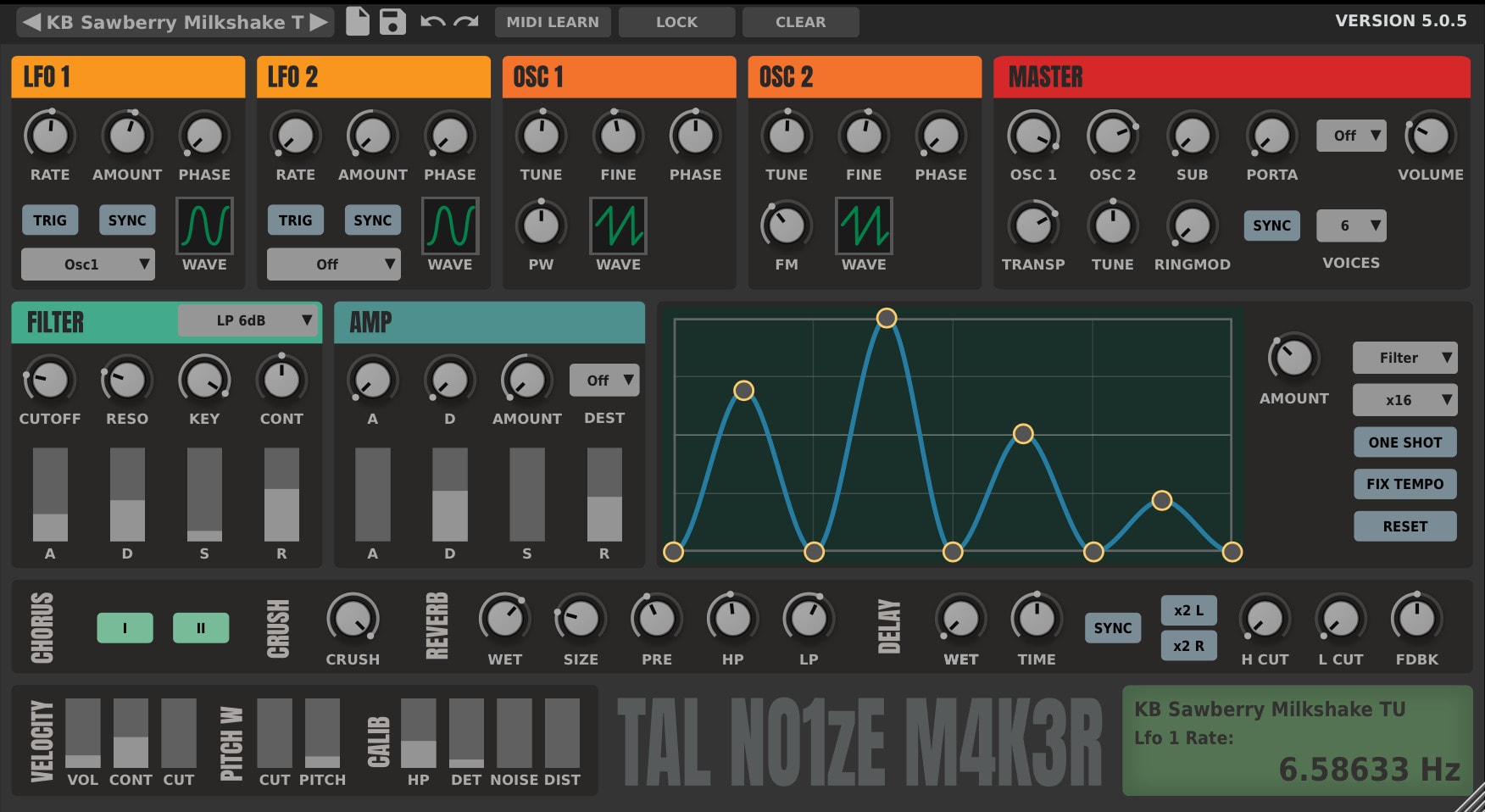
NoiseMaker launched in 2010 from TAL Software GmbH, a Swiss company founded by Patrick Kunz.
Building upon their earlier TAL-Elek7ro plugin, NoiseMaker offered improved sound and more onboard effects, quickly gaining recognition as an excellent introduction to subtractive synthesis.
Patched and improved over the years, it remains a testament to TAL’s commitment to sturdy, usable, and free synthesis tools.
- Notable features:
- Easy-to-use subtractive synth and ideal VST instrument for learning programming basics.
- Warm, chunky filters, built-in effects, and plenty of ready drum sounds.
- Runs smoothly as both an audio plugin and a standalone app.
- Notable producers:
- TAL’s products have been credited in interviews with Grammy winner Flume, Vince Clarke (Depeche Mode, Erasure), and other synthpop/electro acts for other TAL plugins; NoiseMaker is often mentioned in these circles.
Zebralette by u-he

Zebralette first shipped as a free “teaser” of u-he’s flagship Zebra synth in 2011.
Developed by Urs Heckmann and his Berlin-based team, Zebralette was meant to showcase Zebra’s oscillators in a stripped-down package.
Over time, it evolved into a beloved standalone plugin thanks to its distinctive sound and friendly interface, often used both by beginners and Hollywood composers as an “entry drug” to u-he’s ecosystem.
Zebralette shows how even a single-oscillator plugin can become invaluable in the studio.
You’ll find it in hybrid film scores alongside real instruments or layered with sample based instruments.
- Notable features:
- Advanced wavetable oscillator and morphing, delivering a luxurious stereo image for cinematic textures.
- Entry point into the Zebra ecosystem, complete with many presets adapted from the flagship suite.
- Lightweight on resources, VST format for simple workflow.
- Notable producers:
- Hans Zimmer (iconic film composer) is a long-time Zebra and Zebralette user (notably on scores for “Inception” and “The Dark Knight Rises”)[implied via industry interviews and u-he press content].
Synth1
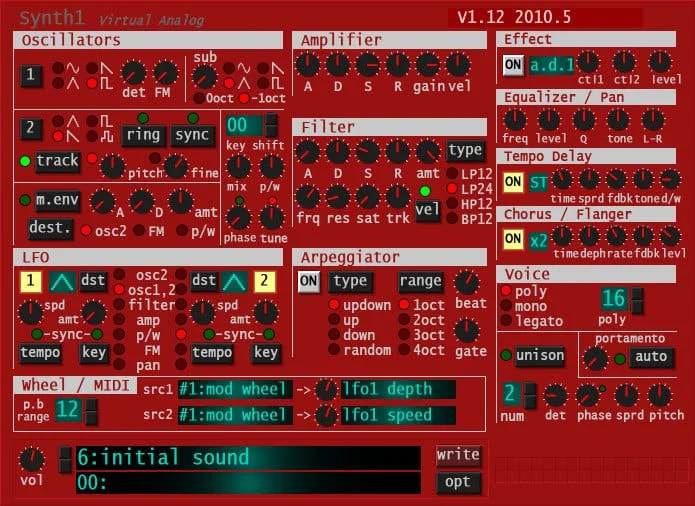
Synth1 appeared in 2002, created by Japanese developer Ichiro Toda. Inspired by the Nord Lead 2 hardware, Toda released it as freeware and maintained frequent updates for almost two decades.
Synth1’s lightweight code, huge library of community presets, and unrivalled compatibility made it the most-downloaded VSTi of its kind; a true legend whose origins trace back to personal passion rather than profit, making it a staple for producers worldwide.
Synth1 is among the best free VST plugins of all time. Use it as a classic virtual synth with the bonus of a huge, thriving preset community.
- Notable features:
- Inspired by Nord Lead 2, offering vintage drum sounds, flexible leads, and a fast workflow.
- Works flawlessly in every VST host, even on old PCs.
- Legendary for its endless, user-created presets, drum loops and more.
- Notable producers:
- Martin Garrix (EDM superstar) has publicly mentioned Synth1 as a crucial influence in his earliest productions[General synth forums].
- Miyolophone (YouTube producer) and countless other bedroom producers and indie EDM acts frequently use Synth1 for its simplicity and enormous preset library.
Understanding synthesis types
Before diving into specific plugins, it helps to understand the main types of synthesis found in free VST instruments. Knowing these will help you choose the right synth for the sound you want. Understanding these categories also helps when layering different synths to create a fuller, more professional sound.
Subtractive synthesis: This is the most common type used in classic analogue synths. You start with harmonically rich waveforms such as saw, square, or triangle and subtract frequencies using filters. It is best for warm pads, basses, and classic leads.
Many free synths like Tyrell N6 and TAL-NoiseMaker excel here. Subtractive synthesis is also one of the easiest methods to learn, making it ideal for beginners.
FM synthesis: Frequency modulation synthesis creates complex waveforms by modulating one oscillator’s frequency with another. It is famous for electric pianos, metallic percussion, and bell-like tones. Dexed is a prime free example.
FM synthesis can produce highly expressive and intricate sounds, but often requires more time to master due to its complexity.
Wavetable synthesis: This method scans through different waveforms within a table, allowing for dynamic and evolving timbres. It is perfect for modern EDM, cinematic textures, and aggressive basses. Vital is a standout in this category.
Wavetable synthesis is particularly versatile because a single oscillator can produce vastly different tones depending on how the table is scanned or morphed.
Granular synthesis: Sounds are broken into small “grains” and manipulated for unique and often atmospheric textures. This is less common in free synths but available in some hybrid instruments like Surge XT.
Granular synthesis can transform simple recordings into evolving soundscapes, making it a favourite for experimental and ambient genres.
Physical modelling synthesis: Uses mathematical models to simulate real-world instruments and acoustic behaviours. While rare in free offerings, Surge XT has modes that hint at this technology which are useful for experimental sound design.
This approach is excellent for creating realistic emulations of strings, winds, or percussive instruments without relying on large sample libraries.
How to choose the right free synth for your genre
The best synth for you depends on the genre and sonic goals. Matching synthesis type and sound character to your style can save time and inspire creativity.
EDM: Vital for aggressive basses and leads. Surge XT for evolving pads. Layer with Synth1 for plucks. EDM producers often use wavetable synths for their cutting-edge sound design options.
Trap: Use Dexed for bell tones, Helm for sub-bass, and Tyrell N6 for dark pads. Trap production benefits from FM tones for melodies and deep, clean subs for impact.
Pop: Tyrell N6 for warm chords, OB-Xd for lush strings, Vital for modern top-line synths. Pop arrangements often combine vintage warmth with crisp, modern layers.
Cinematic: Zebralette for evolving textures, Odin 2 for drones, Surge XT for atmospheric soundscapes. Cinematic scoring thrives on rich layers and evolving modulations to build tension and depth.
Ambient: Surge XT’s granular and wavetable modes. TAL-NoiseMaker for soft pads. Layer with Crystal. Ambient tracks benefit from long release times and spatial effects for immersive sound.
Rock: OB-Xd for organ-like layers, Synth1 for classic leads, Tyrell N6 for vintage textures. Rock productions often use synths to add depth or reinforce guitars without dominating the mix.
Essential free effects to pair with your synths
A great synth becomes a professional instrument with the right processing. Free effects can provide that finishing polish and help shape your sound to sit perfectly in a mix.
Reverb: Valhalla Supermassive offers lush, spacious algorithms ideal for pads and textures. It can turn a dry lead into a vast, atmospheric sound instantly.
Delay: TAL-Dub-3 delivers warm, tape-style delay with simple controls. Use it for rhythmic echoes or subtle ambience.
Chorus: TAL-Chorus-LX is based on the Roland Juno-60 chorus and is perfect for widening synths. It is particularly effective on pads and basslines that need more width.
Distortion and saturation: Softube Saturation Knob adds warmth or grit to leads and basses. It can help digital synths sound more analogue-like.
Limiter and compressor: Audio Damage Rough Rider controls peaks and adds punch to synth tracks. Compression ensures your synth layers remain present in a dense mix.
Building a professional sound with only free tools
It is possible to make commercial-quality music using only free plugins if you follow a structured approach. The key is to combine the right tools and manage your workflow efficiently.
Layering synths: Combine multiple free synths to fill out the frequency spectrum. For example, use Vital for highs, Tyrell N6 for mids, and Helm for lows. Layering also allows for complex textures that a single synth might not achieve.
EQ and filtering: Apply subtractive EQ to remove unwanted frequencies. Many DAWs include capable free EQs. Proper EQ ensures each instrument has its own space in the mix.
Compression: Control dynamics with a free compressor such as TDR Kotelnikov, ensuring each layer sits well in the mix. This can also add punch to rhythmic synth parts.
Stereo imaging: Spread pads and textures wide while keeping the bass centred. Ozone Imager, which is free, is effective. Wide stereo placement adds dimension and interest to your arrangement.
Real-world example: At TYX Studios, we have mixed tracks built entirely from Surge XT, Dexed, and TAL-NoiseMaker, processed with free effects, that matched the loudness and clarity of major label releases. This proves that with the right skills and tools, free plugins can deliver professional results.
Common mistakes when using free synth VSTs
Avoiding these mistakes will help you get the most from your free instruments and maintain a clean, professional mix.
Over-processing: Adding too many effects can muddy the mix. Keep processing minimal and purposeful. Simplicity often results in clearer and more powerful arrangements.
Neglecting gain staging: Keep levels consistent from the synth output through to the mix bus to avoid distortion. This ensures balanced dynamics and prevents clipping.
Ignoring presets: Many producers dismiss factory presets, but they can be excellent starting points. Tweak them to fit your track and learn how they are built.
Relying on one synth: Different synths have strengths. Use the right tool for each sound. Limiting yourself to one instrument can restrict your sonic palette.
Future trends in free synth development
The landscape for free synths continues to evolve. These trends will shape the next generation of instruments available to producers.
AI-assisted sound design: Upcoming plugins are beginning to integrate AI to suggest patches based on your project’s audio context. This can speed up the creative process and spark new ideas.
MPE (MIDI Polyphonic Expression): More free synths are supporting MPE, which allows expressive control over individual notes. This is especially valuable for live performance and expressive playing.
Hybrid hardware and software: Some developers are creating free software versions of their hardware instruments to attract new users. This approach lets musicians experience a product’s core sound before committing to hardware.
Community-driven updates: Open-source projects such as Surge XT will continue to thrive with features added directly from user requests. Community involvement ensures the instruments stay relevant and innovative.
Pro tips for getting the most from free synth VSTs
- Download branded plugin artwork and logos for professional reviews and social media.
- Combine modern synthesisers, drum sounds and drum loops for richer compositions, use the new features in Vital and Surge XT for creative sound layers. You can download free VST plugins to add to your setup, giving you more free sounds and effects.
- Manage many free options with a dedicated VST host, standalone app, or solutions by Full Bucket Music for live performances or when previewing new plugins.
- Mix free synths with real instruments and sampler instruments such as Decent Sampler; expand possibilities with big sample libraries and many presets.
- For a wider stereo image and professional output, combine a free limiter plugin (like Rough Rider) with your synths and use effective stereo width controls. This is how many commercial tracks achieve their “sounds great” quality.
Wrapping up
The best free synth VST plugins in 2025 offer exceptional quality, versatility, and professional results without costing a penny. Plugins like Vital, Surge XT, and Dexed have raised the bar for free options, becoming must-have tools for modern music production. By exploring these plugins, you'll significantly enhance your production capabilities and creativity.
Elevate your music production at TYX Studios
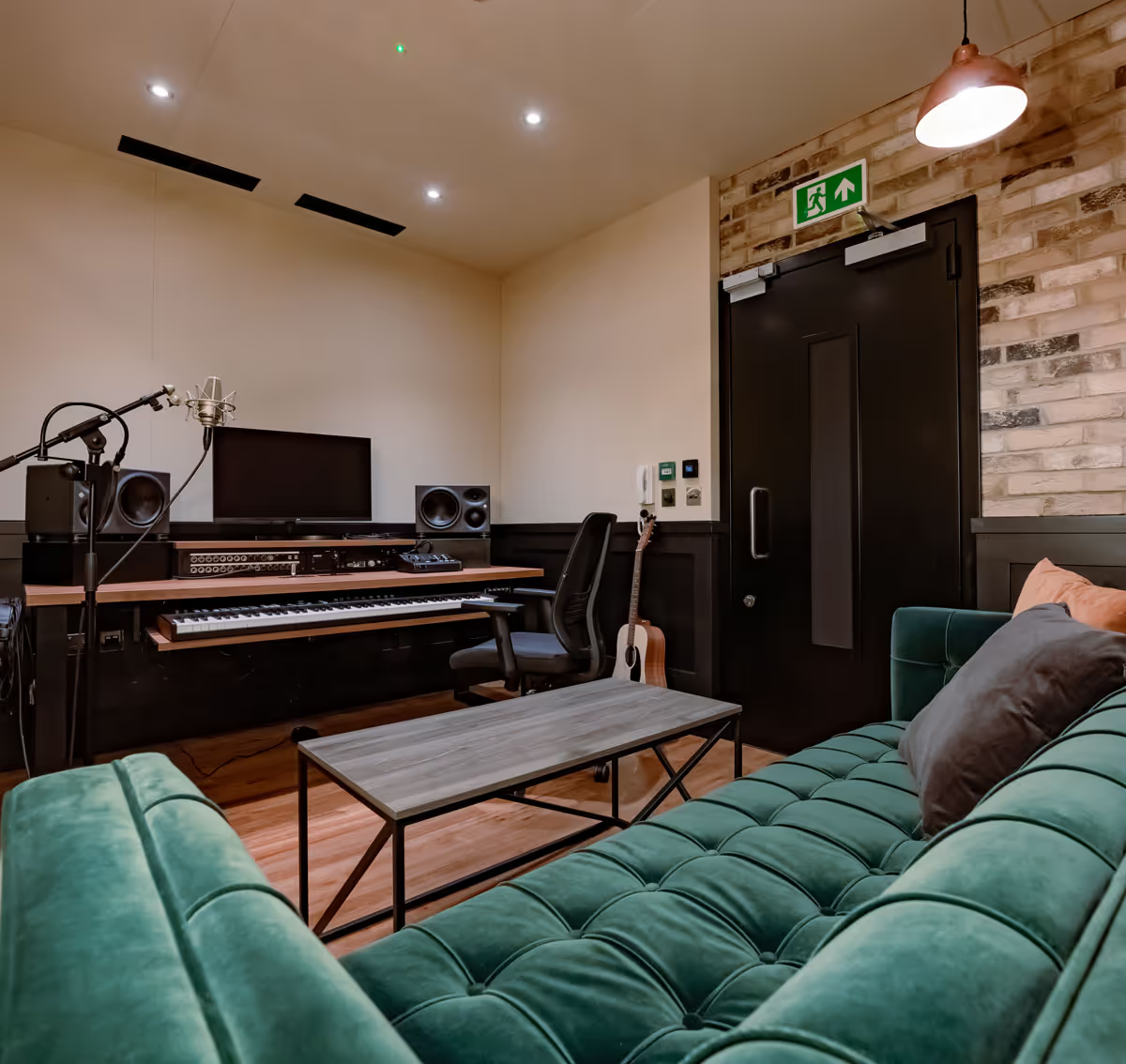
Take your music further with TYX Recording Studios. Record in the legendary Red Studio for a classic sound, experiment with immersive mixes in our state-of-the-art Dolby Atmos Studio, or give your tracks a professional finish with our online mastering service.
Every session gives you access to industry-leading equipment, acoustically treated rooms, and engineers who understand how to bring out the best in your music. Whether you’re fine-tuning a single or completing an album, we’ll help you make it sound exactly how you imagined, only better.
Frequently Asked Questions
A free synth VST plugin is a virtual synth or VST instrument with a feature set designed for DAWs and VST hosts. It generates a wide array of sounds, using sample libraries, oscillators, and presets, without any cost, offering a completely free alternative to commercial synths.
Yes, these plugins conform to VST format standards, support Apple Silicon (where available), and integrate seamlessly into leading DAWs like Ableton Live, Logic Pro, and FL Studio, working alongside Kontakt Player, sample libraries, and the latest virtual synth technology.
Absolutely. TYX Studios fully integrates free synth VSTs, new plugins, and audio plugins (including powerful sample libraries) with paid solutions, demonstrating that great-sounding results often come from combining both worlds.
Yes! Free limiter plugins like Rough Rider are industry-trusted, and pairing them with your preferred completely free synths by using their full feature set enables you to achieve a polished, professional sound in your own commercial releases.
Monitor forums, plugin developer newsletters, and sites like Bedroom Producers Blog to get news on new plugins, updated feature sets, free options, and Apple Silicon releases, ensuring your virtual synth and VST instruments toolkit is always current.

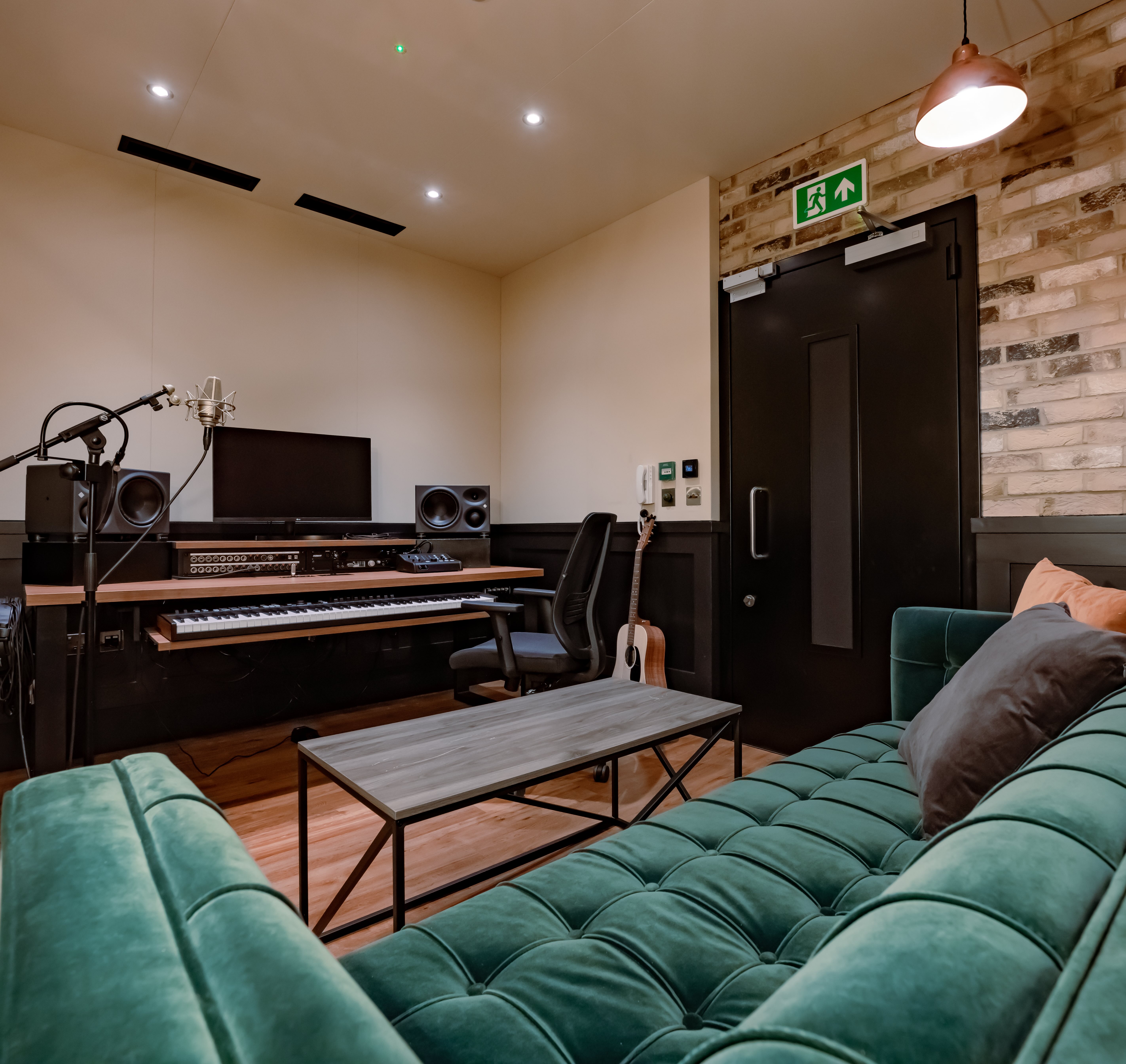














.jpg)
